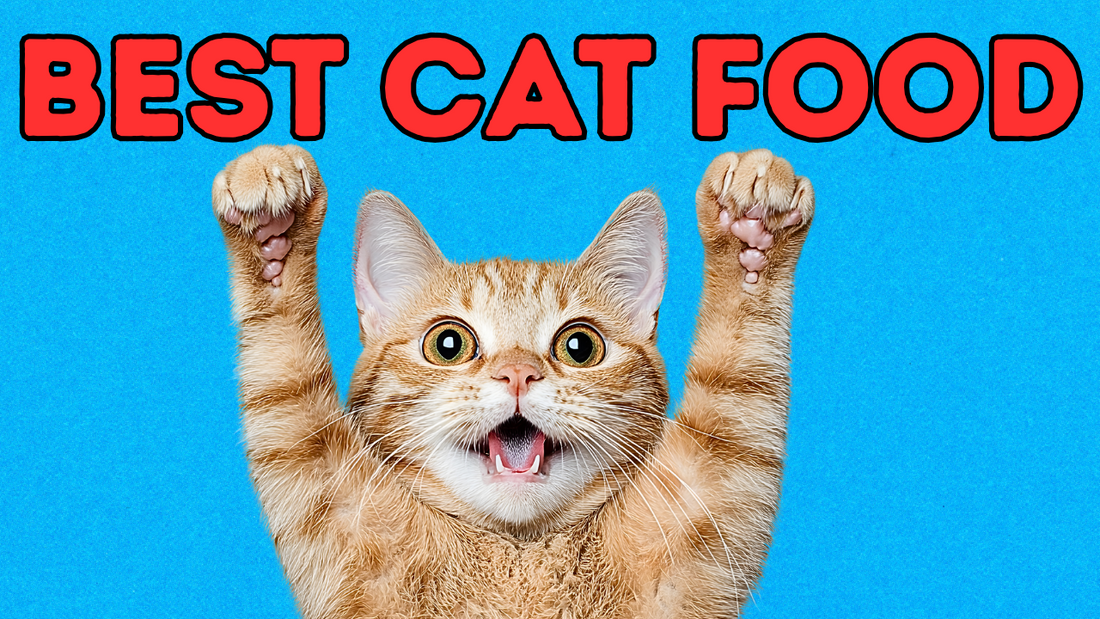
🐱 What Should Cats Really Eat? A Nutritionist’s Guide
Share
When it comes to feeding our feline companions, we all want to provide them with the best. For many, that "best" is a raw food diet, which is considered the gold standard for cats because it mimics their natural, prey-based diet. But what happens when your cat simply won't eat raw food?
As a feline nutritionist, I’ve seen this problem time and again. It’s not just about a picky cat; it's about understanding why they're turning up their nose at what's supposedly the healthiest option. Getting your cat to eat a better diet is about more than just the food itself—it's about understanding feline psychology and being patient.
Why Won't My Cat Eat Raw Food?
Before you give up on a raw diet, it's important to understand the three main reasons cats reject it, even if it's nutritionally perfect.
-
Imprinted Feeding Behavior: Cats are creatures of habit. If your cat was raised on highly processed kibble with artificial flavors, that's what their brain recognizes as "food." It’s like trying to convince someone who grew up on fast food that steamed broccoli is a delicious dinner. It takes time and strategy to shift their perception.
-
Temperature: In the wild, a freshly caught mouse is warm. Raw food straight from the fridge is cold. A cat's natural instincts tell them that cold food is unusual and potentially unsafe. Simply warming the food to room temperature (or a little warmer) can make a huge difference in how your cat reacts to it.
-
Hyper-Palatable Addiction: Many commercial dry and wet foods are loaded with addictive flavor enhancers like sugar, salt, and artificial flavors. These ingredients are designed to be "hyper-palatable," making your cat crave them over and over again. If your cat is turning down a piece of plain chicken but will happily devour a supermarket gravy pouch, it's not a mystery—they’re hooked on the equivalent of fast food.
If Raw Isn't an Option, What's the Next Best Thing?
If your cat is not taking to a raw diet, don't worry. The goal is to feed your cat better, not to be perfect. Here are three options to consider:
Option 1: Try a Raw Diet with a Strategy
Don't give up on raw just yet. Instead, change your approach. Start with a single protein source like chicken thighs, turkey, or beef.
-
Serve it at the right temperature: Take the food out of the fridge and let it come to room temperature before serving.
-
Add moisture and flavor: You can also try adding a bit of moisture or a natural flavor enhancer like a small amount of an egg to make it more appealing.
-
Be patient: Remember, this is a slow process. It may take weeks or even months of consistent effort to get your cat to accept a new food.
Option 2: Choose a High-Quality Wet Food
If raw feeding is simply not an option, the next best choice is a high-quality wet food. When you're shopping, look for these things:
-
High animal content: Find a food with 90% or more animal content. The first few ingredients should be meat, heart, or liver, and not grains, peas, or potatoes.
-
No fillers or additives: Avoid fillers, thickeners, and sugar derivatives. Be on the lookout for ingredients like carrageenan, guar gum, or xanthan gum.
-
Hydration is key: Wet food is crucial for a cat's hydration, which is often overlooked. Chronic dehydration from an all-kibble diet can lead to serious health issues like chronic kidney disease.
Option 3: Find the Best Kibble You Can
Even if your only option is dry food, you can still make a better choice.
-
Prioritize protein: Look for kibble with the highest crude protein content possible. This protein should come from animal sources, not plants.
-
Minimize carbohydrates: Cats are obligate carnivores, which means their bodies are not designed to digest carbohydrates. While all kibble has some starch, aim for a brand with the lowest possible carbohydrate content.
-
Avoid certain ingredients: Stay away from low-quality dry foods that contain sugar, caramel, or artificial flavorings. Also, be wary of foods marketed as "vet-approved" that are primarily made with cheap fillers like corn, soy, or meat by-products. These can lead to serious health issues down the line.
A Word on Transitioning Your Cat
Introducing a new food to a cat takes patience. They don't like unfamiliar things, especially when it comes to their meals.
-
Two-bowl method: Try putting their new food in a separate bowl next to their old food. This allows them to investigate the new option without feeling pressured to eat it.
-
Slow and steady: Start by mixing a tiny amount of the new food into their current food. Over the course of several weeks, gradually increase the new food while decreasing the old one.
-
Consider their lifestyle: An outdoor cat that hunts may be less hungry for a meal at home. An indoor cat's transition may be a bit easier, as you have more control over their diet.
The goal is to do better for our cats so they can live longer, healthier lives. Whether it’s a raw diet or a better wet food, every small step makes a big difference.